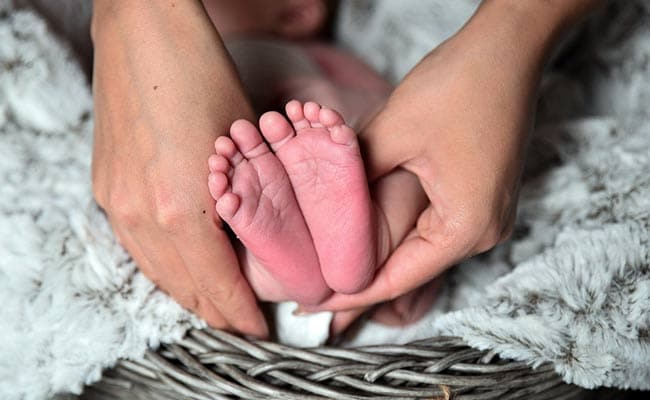
There are three crore orphaned children in India, but only 3,500 to 4,000 children are available for adoption in a year and some 30,000 prospective parents have to wait for three years to bring home a child.
Taking note of this discrepancy, Chief Justice of India DY Chandrachud observed recently: “Why are they (Central Adoption Resource Authority) stalling adoptions? Why is CARA not doing it? Hundreds of children are awaiting adoption in the hope of a better life.” The remarks were made when the Supreme Court was hearing two petitions flagging gaps that were delaying adoptions and making the entire process a sham. The practical difficulties of adoption were also highlighted in the court, with one of the judges bringing out the humane and human aspect and cost to the society.
CARA, a statutory body of the Ministry of Women and Child Development, functions as the central body for adoption of Indian children and is mandated to monitor and regulate in-country and inter-country adoptions. CARA primarily deals with the adoption of “orphan, abandoned and surrendered” children through its associated and recognised adoption agencies.
Due to red tape and lack of transparency, several thousand children are being deprived of home and the love of parents. With each month’s delay, the children grow and age, and their chances of adoptability and adaptability diminishes. The prospective parents, too, lose their precious years doing cumbersome and complicated paperwork. Their financial condition suffers as they scout and wait their turn and are made to visit different adoption centres in the country.
The conditions of the shelter homes where these children are placed are also not hygienic, with funds and staff both short.
Deepak Sharma, Trustee, Udayan Care, an NGO for Child Rights, says there is no dearth of funds for his organisation but some shelters in India face financial challenges due to their location and the resources available. “Funding comes from a combination of sources. There is government funding in Mission Vatsalya for funding institutions, mostly funds come from donations from individuals, corporations, and other charitable entities or even from international organisations and foundations or corporate social responsibility,” Mr Sharma explains.
In India, adoptions are governed by two laws – the Hindu Adoption and Maintenance Act, 1956 (HAMA) and the Juvenile Justice (JJ) Act, 2015. Both laws have their separate eligibility criteria for adoptive parents. Those applying under the Juvenile Justice Act need to register on CARA’s portal, after which a specialised adoption agency carries out a home study report. When it finds the candidate eligible for adoption, a child declared legally free for adoption is referred to the applicant.
Under HAMA, a court order, ‘dattaka hom’ ceremony or an adoption deed is sufficient to obtain irrevocable adoption rights. Hindus, Buddhists, Jains, and Sikhs are legalised to adopt kids under HAMA.
CARA carries out the tedious process to safeguard adoptive children from abuse at the hands of adoptive parents.
The Parliament passed the Juvenile Justice (Care and Protection of Children) 2021, in order to amend the JJ Act, 2015. The crucial changes include authorising District Magistrates (DMs) and Additional District Magistrates to issue adoption orders under Section 61 of the JJ Act by striking out the word ‘court’. These changes were carried out “in order to ensure speedy disposal of cases and enhance accountability,” per the government statement.
However, the very purpose of these amendments has not been met as no time limit has been set up for the transfer of all pending adoption cases before the courts to the District Magistrates, which may end up in longer delays. Moreover, prospective parents are also not clear about the legality of an executive order on the adopted child’s entitlements on succession and inheritance rights.
In August 2022, a parliamentary standing committee had expressed serious concerns over the decline in the number of children coming to adoption agencies over the years, saying it pointed to trafficking or a thriving illegal child adoption market. It’s a fact that many unregistered adoption agencies are flourishing in the country; illegal and unregulated adoptions are being carried out. Some are involved in child trafficking or exploiting vulnerable children and their biological and adoptive parents.
Typically, there is a shorter queue for older children, children with special needs, or sometimes, even children from some regions. CARA has even introduced a new category of “Children for Immediate Placement” where the wait time may be considerably less.
Mr Sharma says generally, there is a demand for newborn and younger children, particularly infants and toddlers, in the adoption process. “Many adoptive parents prefer younger children as they desire to experience the early stages of a child’s development and form strong bonds from the start. But now CARA is advocating for adoption of older children also,” he adds.
A young single woman (name withheld) in Bengaluru has been in the queue for adoption for three years. She has completed all the paperwork, but her wait has been stretched by the adoption agency, where she is registered. She thinks that her adoption agency is giving preference to candidates who are better off than her financially. “My waiting time has been constantly increased without any reason. The counsellors are also of little help. Except for guiding us about the papers and forms to be filled, they have hardly been of any assistance in understanding the process or how it works,” she says.
There is an urgent need to streamline the adoption process, simplify paperwork, transparency, and reduce the time limit, to the benefit of both the child and the adoptive parents. Loopholes, doubts, and ambiguities in current legislation must be plugged. Unless this happens, thousands of children will languish in shelter homes bereft of love, care and education.
(Bharti Mishra Nath is a senior journalist)
Disclaimer: These are the personal opinions of the author




